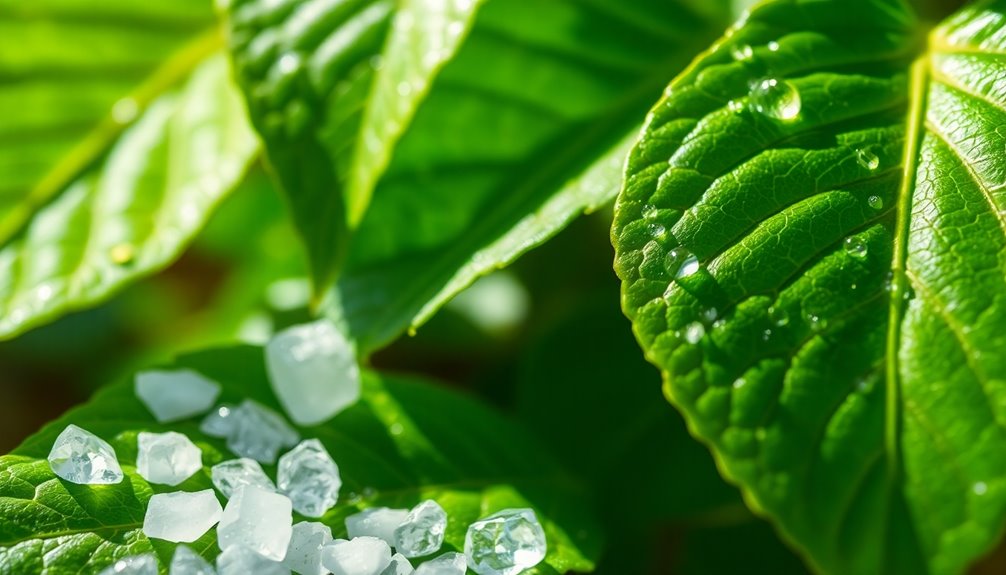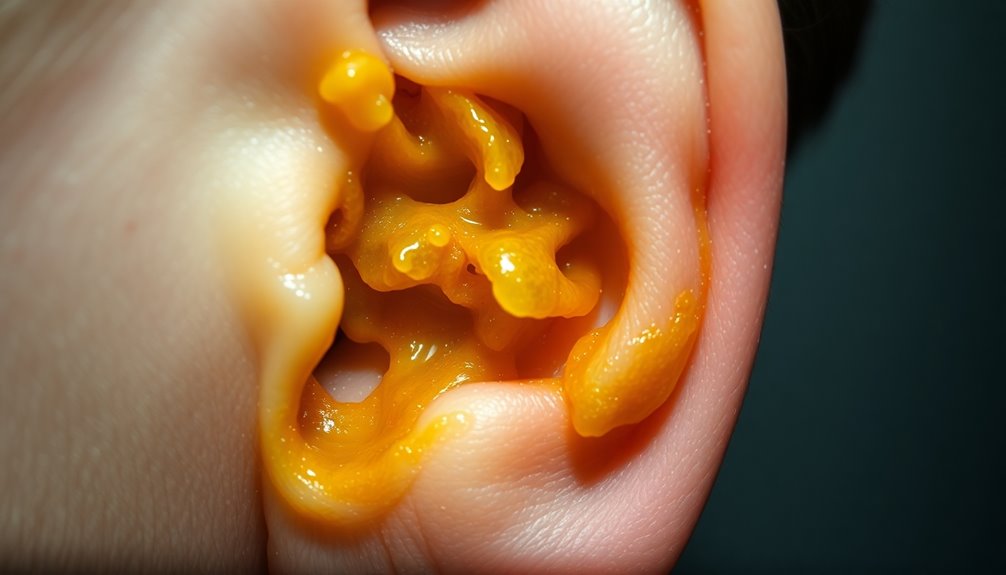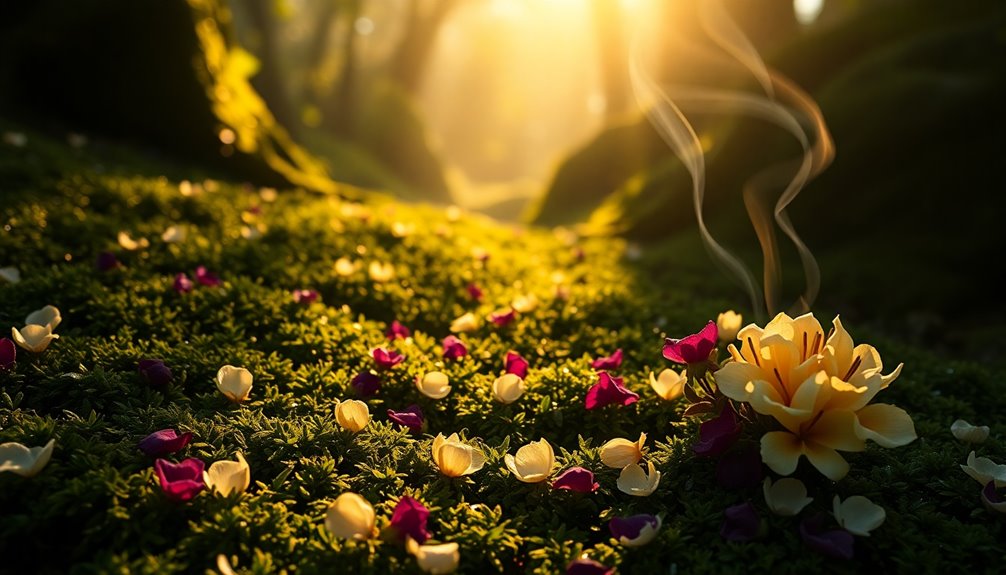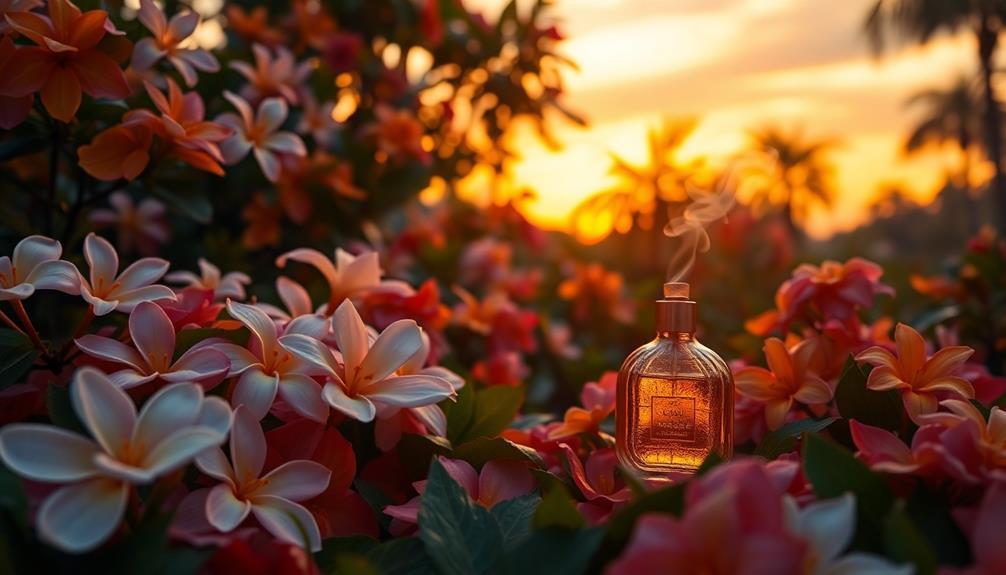Camphor has a strong, medicinal smell that you might recognize from mothballs. Its aroma combines woody and herbal notes, creating a cooling sensation similar to eucalyptus or mint. This penetrating fragrance can evoke feelings of clarity and freshness, often brightening floral compositions and pairing well with citrus. Many people associate its scent with nostalgia, linking it to traditional healing practices or vintage toys. Its unique scent profile makes camphor versatile in perfumery and household products. If you'd like to explore more about its uses and benefits, keep going to uncover fascinating insights.
Key Takeaways
- Camphor has a strong, medicinal scent reminiscent of mothballs, often described as penetrating and woody.
- Its aroma features complex notes, including herbal and cooling elements similar to eucalyptus and mint.
- The fragrance evokes a sense of freshness and clarity, enhancing floral compositions by balancing sweetness.
- Camphor's scent can trigger nostalgia, often associated with vintage toys and cultural artifacts.
- It is versatile in perfumery, amplifying other scents and pairs well with citrus and floral notes.
Introduction

Camphor's scent is undeniably distinctive, often drawing strong reactions from those who encounter it. You might find its aroma reminiscent of mothballs, offering a bracing and pungent experience. This strong, medicinal scent features woody, herbal, and cooling notes, making camphor a versatile ingredient in both perfumery and therapeutic applications. When blended with essential oils, camphor enhances aromatic-herbal and fruity compositions, creating a well-rounded scent profile.
You may notice how it balances the sweetness in floral scents like tuberose, adding depth to fragrances. Derived from the camphor laurel (Cinnamomum camphora), this powerful compound contributes significantly to the complex scent of various essential oils. As you explore camphor's aroma, be aware that emotional responses can vary widely. Some people might feel a surge of happiness or nostalgia tied to their past experiences with this distinct smell.
Whether you're using it in a therapeutic setting or enjoying its presence in a fragrance, camphor's unique characteristics are sure to leave a lasting impression. Embrace the complexity and richness that camphor brings to the world of scents.
Description of the Smell
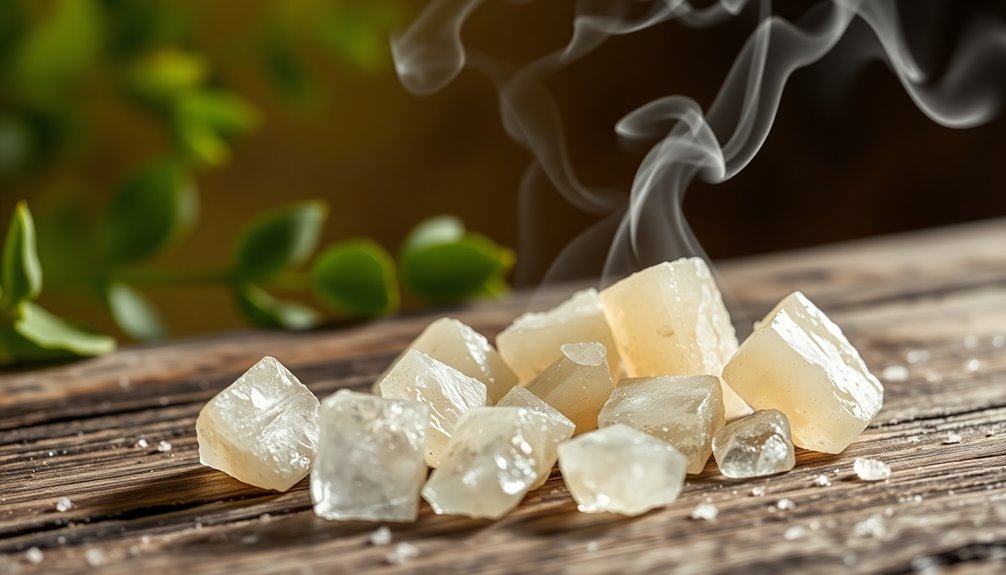
There's no mistaking the smell of camphor; it hits you with a strong, medicinal aroma that can evoke memories of mothballs. This distinctive scent is not just powerful; it's complex, combining woody and herbal notes that create a bracing, pungent quality. When you breathe it in, you might notice a cooling sensation reminiscent of eucalyptus and mint, making it refreshing yet assertive.
Derived from the camphor tree, this essential oil carries an olfactory presence that's easily recognizable. It's a scent that makes a bold statement, often enhancing floral compositions by balancing sweetness and adding depth to fragrances like tuberose. You'll find camphor valued in perfumery for its ability to amplify other notes, contributing to an intricate scent profile in both niche and mainstream fragrances.
Whether used in oils or incorporated into various products, camphor's aroma is versatile, seamlessly blending with other elements. Its unique characteristics allow it to stand out, forging connections to memories and experiences while simultaneously refreshing the air around you.
Source and Composition
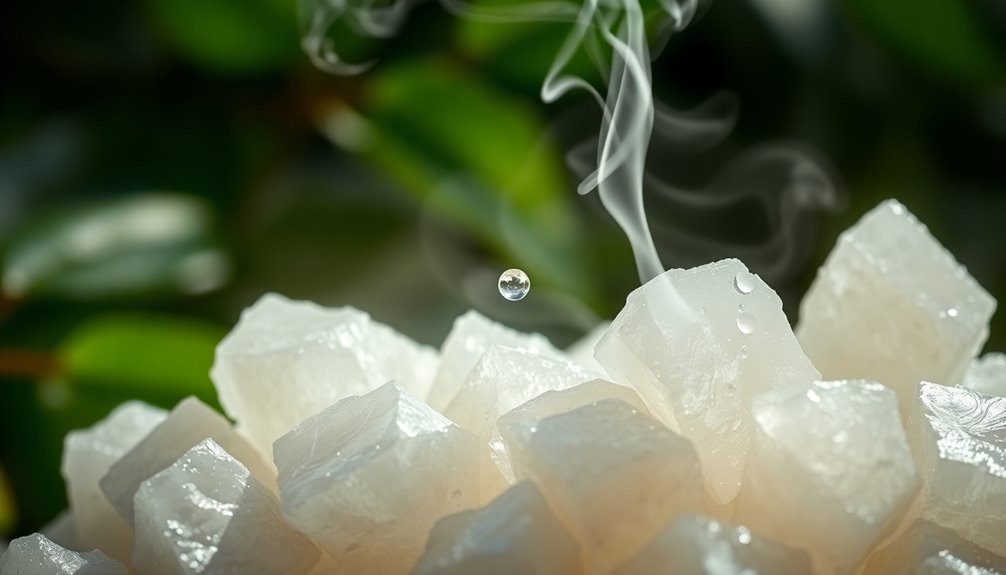
The distinctive aroma of camphor comes from its source, the camphor tree (Cinnamomum camphora), which thrives primarily in East Asia. You'll find that camphor is derived from the wood of the camphor tree, characterized by its white crystalline form. This unique tree produces a chemical composition rich in various compounds, each contributing to the pungent, cooling, and herbal scent you may recognize.
When you inhale camphor, its scent profile reveals a woody and green quality, combined with a mothball-like essence that's both refreshing and medicinal. It's fascinating to note how the simple molecular structure of camphor allows your olfactory receptors to easily recognize it, making it a prominent note in many fragrances.
You might also discover camphor in various essential oils, where it serves as a versatile ingredient in perfumery. Its ability to enhance floral, herbal, and fruity compositions makes it a sought-after choice, skillfully balancing sweetness with a hint of decay. Whether in mainstream or niche fragrances, camphor's captivating aroma continues to evoke strong emotional responses, making it a beloved scent across many applications.
Typical Scenarios or Environments
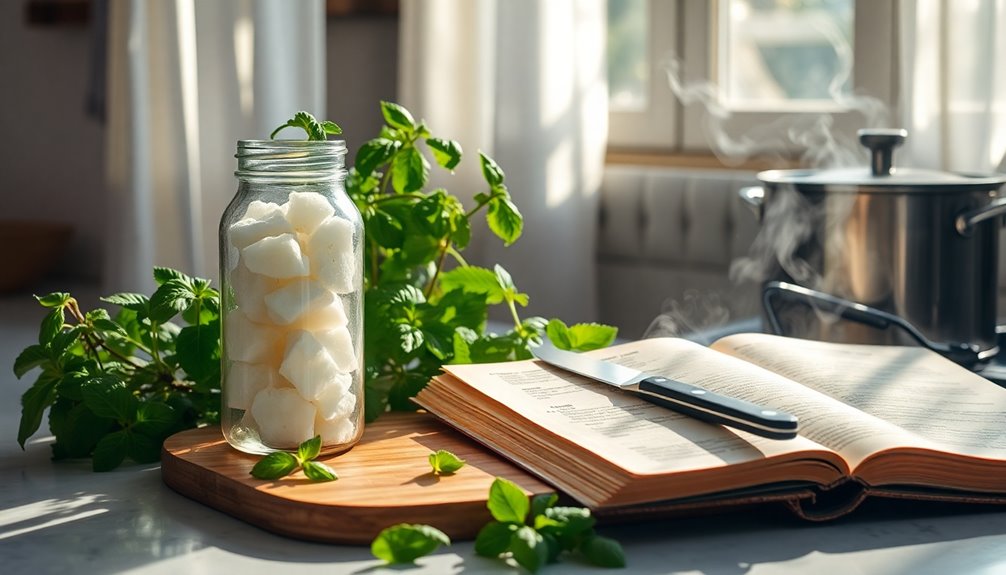
In a variety of settings, you might encounter the distinct scent of camphor, often evoking memories and feelings of clarity. This strong, medicinal aroma is commonly used in therapeutic environments, especially in products like chest rubs designed for respiratory relief. When you apply a chest rub, the cooling scent envelops you, promoting relaxation and aiding in easier breathing.
You may also notice camphor's refreshing fragrance in outdoor and summer fragrances, enhancing your experience of fresh air and invigorating nature. It's a scent that brings a certain brightness to your surroundings, perfect for a warm day.
In spiritual or meditative settings, burning camphor incense creates an atmosphere believed to promote concentration and purity. The aroma can help you focus during contemplation or prayer.
Additionally, if you venture into Indian cooking, you might find camphor used sparingly in certain dishes. Its sharp, pungent aroma adds a unique depth to the flavors, creating a complex sensory experience that lingers in your memory. In each of these scenarios, camphor's scent is a powerful presence, connecting you to moments of healing, freshness, and culinary delight.
Emotional or Cultural Associations
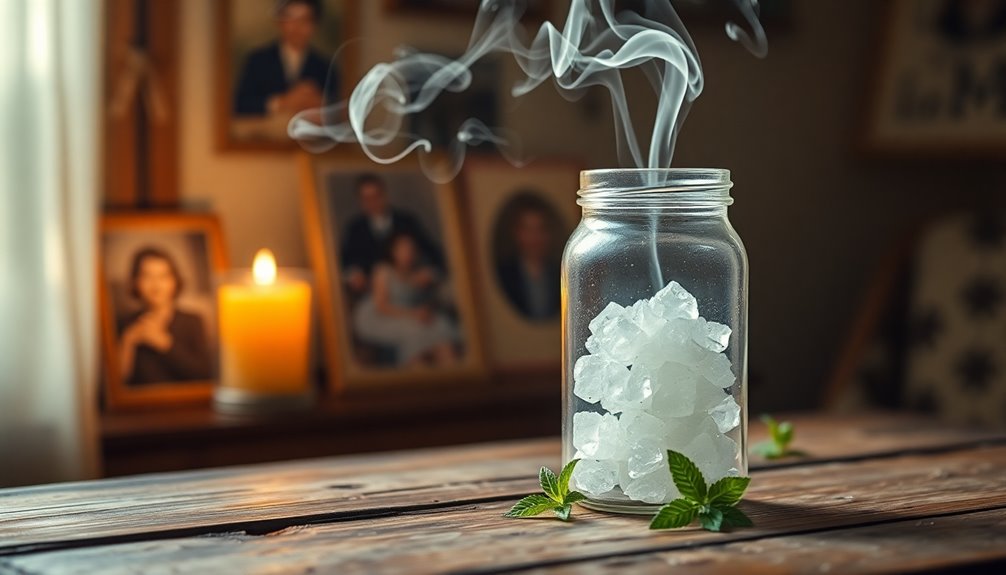
Camphor's scent often stirs deep emotional connections and cultural memories, weaving nostalgia into everyday life. You might recall the faint aroma of vintage toys or Soviet-era dolls, both often made from celluloid, which carries a light camphor essence. This scent can evoke a spectrum of feelings—happiness, surprise, or even sadness—depending on your personal experiences and associations with it.
Culturally, camphor holds significant value in various traditional practices, often linked to healing and purification rituals. When you encounter fragrances that incorporate camphor, like those from Serge Lutens or Etat Libre d'Orange, you explore a rich tapestry of scent and cultural artifacts, enhancing your olfactory journey.
The strong and sometimes polarizing nature of camphor can generate strong opinions. Perhaps you love it, or maybe it's not your favorite. This reflects the subjective nature of fragrance appreciation, as different types of scents resonate differently with each person. The presence of methyl salicylate adds another layer, connecting you to memories or experiences that shape your emotional response to camphor, making it an intriguing and multifaceted aroma.
Health or Safety Considerations

When considering health and safety, it's crucial to recognize that camphor isn't just a pleasant scent; it can pose significant risks if misused. Ingesting camphor can lead to severe side effects, including seizures or even death, which is why oral formulations have been banned in the U.S. since the 1980s. When using camphor topically, you should stick to concentrations between 0.1% and 11%, as higher levels can irritate your skin or become toxic, especially on broken skin.
Children are particularly vulnerable to camphor's effects, so keeping camphor products out of their reach is a must to prevent accidental poisoning. Even short-term exposure can lead to serious health consequences like multiorgan failure and hepatotoxicity, particularly when used in high concentrations or mixed with hepatotoxic drugs. Always read labels carefully and follow safety guidelines to minimize risks.
Final Thoughts
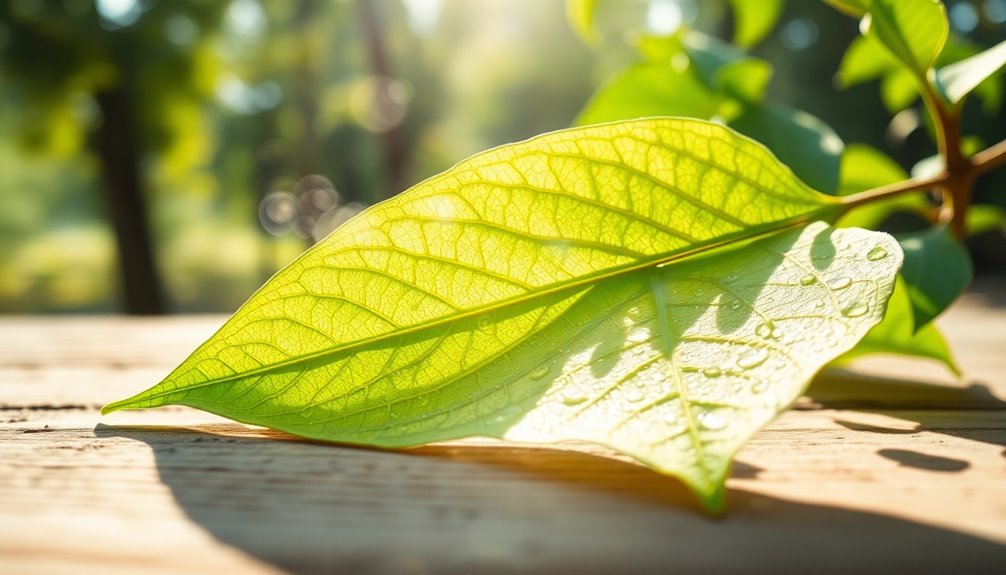
Understanding camphor's health risks is important, but its unique scent also deserves attention. This distinctive aroma is often described as strong and medicinal, evoking memories of mothballs, yet it offers so much more. With woody, herbal, and cooling notes, camphor's fragrance is versatile and can elevate various scent compositions.
When used in fragrances like Tubereuse Criminelle by Serge Lutens and Carnal Flower by Frederic Malle, camphor adds depth and complexity that enhances aromatic-herbal and fruity scents. It effectively balances sweetness and decay, particularly in floral fragrances like tuberose. The smell of camphor stands out due to its simple molecular structure, allowing it to interact uniquely with your olfactory receptors.
If you're exploring new fragrances, consider how camphor can transform your experience. Whether you appreciate its bracing green notes or its ability to create intriguing contrasts, you'll find that camphor's scent is anything but ordinary. So, the next time you encounter camphor, take a moment to appreciate its distinctive qualities and how it can enrich your scent journey.
Frequently Asked Questions
How Would You Describe the Smell of Camphor?
When you encounter camphor's scent, you're hit with a strong, medicinal aroma that's both cooling and invigorating. It's pungent and woody, with herbal undertones that can remind you of mothballs. You might find it refreshing, as if it clears your senses. This complex scent balances sweetness and decay, often evoking nostalgia and stirring emotions. In perfumes, it cuts through heavier notes, adding a refreshing burst that enhances the overall fragrance experience.
What Scent Is Similar to Camphor?
If you're exploring scents similar to camphor, you'll find eucalyptus and rosemary stand out. Both carry a sharp, refreshing aroma that shares camphor's medicinal qualities. Menthol might also catch your attention, with its cooling sensation and invigorating scent. You might even notice hints of certain pine trees, which offer woody and herbal notes, evoking cleanliness. In perfumery, camphor pairs well with earthy scents like patchouli and sandalwood, enhancing their depth and freshness.
Does Camphor Smell Like Vicks?
Yes, camphor does smell like Vicks. When you open a jar of Vicks VapoRub, you immediately notice that strong, medicinal scent, which primarily comes from camphor. It's a bracing aroma that's both cooling and invigorating, helping to clear your nasal passages. While Vicks has a more processed fragrance, the core scent of camphor shares that pungent, slightly sweet profile, making them quite similar in smell.
Why Did the US Ban Camphor?
The US banned camphor due to serious health risks associated with its use, particularly when ingested. Reports of poisonings and severe side effects, including seizures and even death, especially in children, prompted this decision. The FDA recognized camphor's potential toxicity, leading to strict regulations. Concerns over multiorgan failure and hepatotoxicity highlighted the need for caution. You should always be aware of these risks when considering products containing camphor.
